Travelers 2014 Annual Report Download - page 32
Download and view the complete annual report
Please find page 32 of the 2014 Travelers annual report below. You can navigate through the pages in the report by either clicking on the pages listed below, or by using the keyword search tool below to find specific information within the annual report.-
 1
1 -
 2
2 -
 3
3 -
 4
4 -
 5
5 -
 6
6 -
 7
7 -
 8
8 -
 9
9 -
 10
10 -
 11
11 -
 12
12 -
 13
13 -
 14
14 -
 15
15 -
 16
16 -
 17
17 -
 18
18 -
 19
19 -
 20
20 -
 21
21 -
 22
22 -
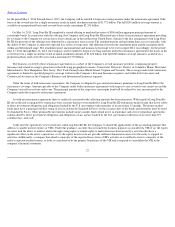 23
23 -
 24
24 -
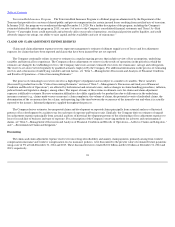 25
25 -
 26
26 -
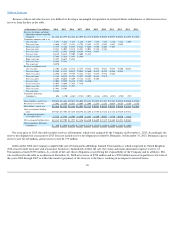 27
27 -
 28
28 -
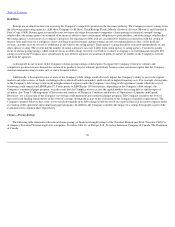 29
29 -
 30
30 -
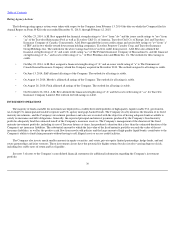 31
31 -
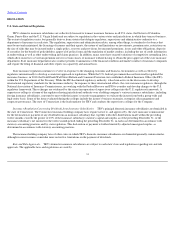 32
32 -
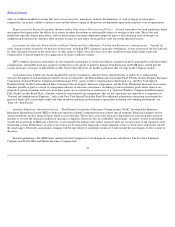 33
33 -
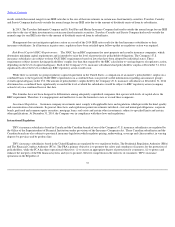 34
34 -
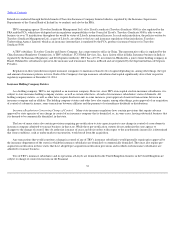 35
35 -
 36
36 -
 37
37 -
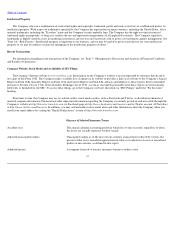 38
38 -
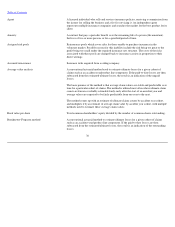 39
39 -
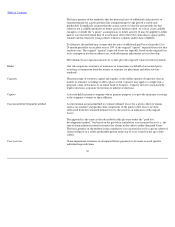 40
40 -
 41
41 -
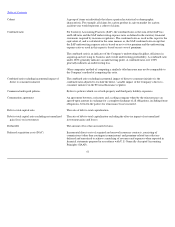 42
42 -
 43
43 -
 44
44 -
 45
45 -
 46
46 -
 47
47 -
 48
48 -
 49
49 -
 50
50 -
 51
51 -
 52
52 -
 53
53 -
 54
54 -
 55
55 -
 56
56 -
 57
57 -
 58
58 -
 59
59 -
 60
60 -
 61
61 -
 62
62 -
 63
63 -
 64
64 -
 65
65 -
 66
66 -
 67
67 -
 68
68 -
 69
69 -
 70
70 -
 71
71 -
 72
72 -
 73
73 -
 74
74 -
 75
75 -
 76
76 -
 77
77 -
 78
78 -
 79
79 -
 80
80 -
 81
81 -
 82
82 -
 83
83 -
 84
84 -
 85
85 -
 86
86 -
 87
87 -
 88
88 -
 89
89 -
 90
90 -
 91
91 -
 92
92 -
 93
93 -
 94
94 -
 95
95 -
 96
96 -
 97
97 -
 98
98 -
 99
99 -
 100
100 -
 101
101 -
 102
102 -
 103
103 -
 104
104 -
 105
105 -
 106
106 -
 107
107 -
 108
108 -
 109
109 -
 110
110 -
 111
111 -
 112
112 -
 113
113 -
 114
114 -
 115
115 -
 116
116 -
 117
117 -
 118
118 -
 119
119 -
 120
120 -
 121
121 -
 122
122 -
 123
123 -
 124
124 -
 125
125 -
 126
126 -
 127
127 -
 128
128 -
 129
129 -
 130
130 -
 131
131 -
 132
132 -
 133
133 -
 134
134 -
 135
135 -
 136
136 -
 137
137 -
 138
138 -
 139
139 -
 140
140 -
 141
141 -
 142
142 -
 143
143 -
 144
144 -
 145
145 -
 146
146 -
 147
147 -
 148
148 -
 149
149 -
 150
150 -
 151
151 -
 152
152 -
 153
153 -
 154
154 -
 155
155 -
 156
156 -
 157
157 -
 158
158 -
 159
159 -
 160
160 -
 161
161 -
 162
162 -
 163
163 -
 164
164 -
 165
165 -
 166
166 -
 167
167 -
 168
168 -
 169
169 -
 170
170 -
 171
171 -
 172
172 -
 173
173 -
 174
174 -
 175
175 -
 176
176 -
 177
177 -
 178
178 -
 179
179 -
 180
180 -
 181
181 -
 182
182 -
 183
183 -
 184
184 -
 185
185 -
 186
186 -
 187
187 -
 188
188 -
 189
189 -
 190
190 -
 191
191 -
 192
192 -
 193
193 -
 194
194 -
 195
195 -
 196
196 -
 197
197 -
 198
198 -
 199
199 -
 200
200 -
 201
201 -
 202
202 -
 203
203 -
 204
204 -
 205
205 -
 206
206 -
 207
207 -
 208
208 -
 209
209 -
 210
210 -
 211
211 -
 212
212 -
 213
213 -
 214
214 -
 215
215 -
 216
216 -
 217
217 -
 218
218 -
 219
219 -
 220
220 -
 221
221 -
 222
222 -
 223
223 -
 224
224 -
 225
225 -
 226
226 -
 227
227 -
 228
228 -
 229
229 -
 230
230 -
 231
231 -
 232
232 -
 233
233 -
 234
234 -
 235
235 -
 236
236 -
 237
237 -
 238
238 -
 239
239 -
 240
240 -
 241
241 -
 242
242 -
 243
243 -
 244
244 -
 245
245 -
 246
246 -
 247
247 -
 248
248 -
 249
249 -
 250
250 -
 251
251 -
 252
252 -
 253
253 -
 254
254 -
 255
255 -
 256
256 -
 257
257 -
 258
258 -
 259
259 -
 260
260 -
 261
261 -
 262
262 -
 263
263 -
 264
264 -
 265
265 -
 266
266 -
 267
267 -
 268
268 -
 269
269 -
 270
270 -
 271
271 -
 272
272 -
 273
273 -
 274
274 -
 275
275 -
 276
276 -
 277
277 -
 278
278 -
 279
279 -
 280
280 -
 281
281 -
 282
282 -
 283
283 -
 284
284 -
 285
285 -
 286
286 -
 287
287 -
 288
288 -
 289
289 -
 290
290 -
 291
291 -
 292
292 -
 293
293 -
 294
294 -
 295
295 -
 296
296 -
 297
297 -
 298
298 -
 299
299 -
 300
300 -
 301
301 -
 302
302 -
 303
303 -
 304
304 -
 305
305 -
 306
306 -
 307
307 -
 308
308 -
 309
309 -
 310
310 -
 311
311 -
 312
312 -
 313
313 -
 314
314 -
 315
315 -
 316
316 -
 317
317 -
 318
318 -
 319
319 -
 320
320 -
 321
321 -
 322
322 -
 323
323 -
 324
324 -
 325
325 -
 326
326 -
 327
327 -
 328
328 -
 329
329 -
 330
330 -
 331
331 -
 332
332 -
 333
333 -
 334
334 -
 335
335 -
 336
336 -
 337
337 -
 338
338 -
 339
339 -
 340
340 -
 341
341 -
 342
342 -
 343
343 -
 344
344 -
 345
345 -
 346
346 -
 347
347 -
 348
348 -
 349
349 -
 350
350 -
 351
351 -
 352
352 -
 353
353 -
 354
354 -
 355
355 -
 356
356 -
 357
357 -
 358
358 -
 359
359 -
 360
360 -
 361
361 -
 362
362 -
 363
363 -
 364
364 -
 365
365 -
 366
366
 |
 |

Table of Contents
REGULATION
U.S. State and Federal Regulation
TRV's domestic insurance subsidiaries are collectively licensed to transact insurance business in all U.S. states, the District of Columbia,
Guam, Puerto Rico and the U.S. Virgin Islands and are subject to regulation in the various states and jurisdictions in which they transact business.
The extent of regulation varies, but generally derives from statutes that delegate regulatory, supervisory and administrative authority to a
department of insurance in each state. The regulation, supervision and administration relate, among other things, to standards of solvency that
must be met and maintained, the licensing of insurers and their agents, the nature of and limitations on investments, premium rates, restrictions on
the size of risks that may be insured under a single policy, reserves and provisions for unearned premiums, losses and other obligations, deposits
of securities for the benefit of policyholders, approval of policy forms and the regulation of market conduct, including the use of credit information
in underwriting as well as other underwriting and claims practices. In addition, many states have enacted variations of competitive ratemaking laws,
which allow insurers to set certain premium rates for certain classes of insurance without having to obtain the prior approval of the state insurance
department. State insurance departments also conduct periodic examinations of the financial condition and market conduct of insurance companies
and require the filing of financial and other reports on a quarterly and annual basis.
State insurance regulation continues to evolve in response to the changing economic and business environment as well as efforts by
regulators internationally to develop a consistent approach to regulations. While the U.S. federal government has not historically regulated the
insurance business, in 2010, the Dodd
-
Frank Wall Street Reform and Consumer Protection Act established a Federal Insurance Office (the FIO)
within the U.S. Department of the Treasury. While the FIO has limited regulatory authority, it has been active in the discussions to develop
international regulatory standards for the insurance industry. In response to these international efforts, the state insurance regulators, through the
National Association of Insurance Commissioners, are working with the Federal Reserve and FIO to consider and develop changes to the U.S.
regulatory framework. These changes are evidenced by the recent incorporation of supervisory colleges into the U.S. regulatory framework. A
supervisory college is a forum of the regulators having jurisdictional authority over a holding company's various insurance subsidiaries, including
foreign insurance subsidiaries, convened to meet with the insurer's executive management, to evaluate the insurer from both a group
-
wide and
legal
-
entity basis. Some of the items evaluated during the colleges include the insurer's business strategies, enterprise risk management and
corporate governance. The state of Connecticut is the lead regulator for TRV and conducts the supervisory colleges for the Company.
Insurance Regulation Concerning Dividends from Insurance Subsidiaries. TRV's principal domestic insurance subsidiaries are domiciled in
the state of Connecticut. The Connecticut insurance holding company laws require notice to, and approval by, the state insurance commissioner
for the declaration or payment of any dividend from an insurance subsidiary that, together with other distributions made within the preceding
twelve months, exceeds the greater of 10% of the insurance subsidiary's statutory capital and surplus as of the preceding December 31, or the
insurance subsidiary's net income for the twelve
-
month period ending the preceding December 31, in each case determined in accordance with
statutory accounting practices and by state regulation. This declaration or payment is further limited by adjusted unassigned surplus, as
determined in accordance with statutory accounting practices.
The insurance holding company laws of other states in which TRV's domestic insurance subsidiaries are domiciled generally contain similar,
although in some instances somewhat more restrictive, limitations on the payment of dividends.
Rate and Rule Approvals. TRV's domestic insurance subsidiaries are subject to each state's laws and regulations regarding rate and rule
approvals. The applicable laws and regulations are used by
31
